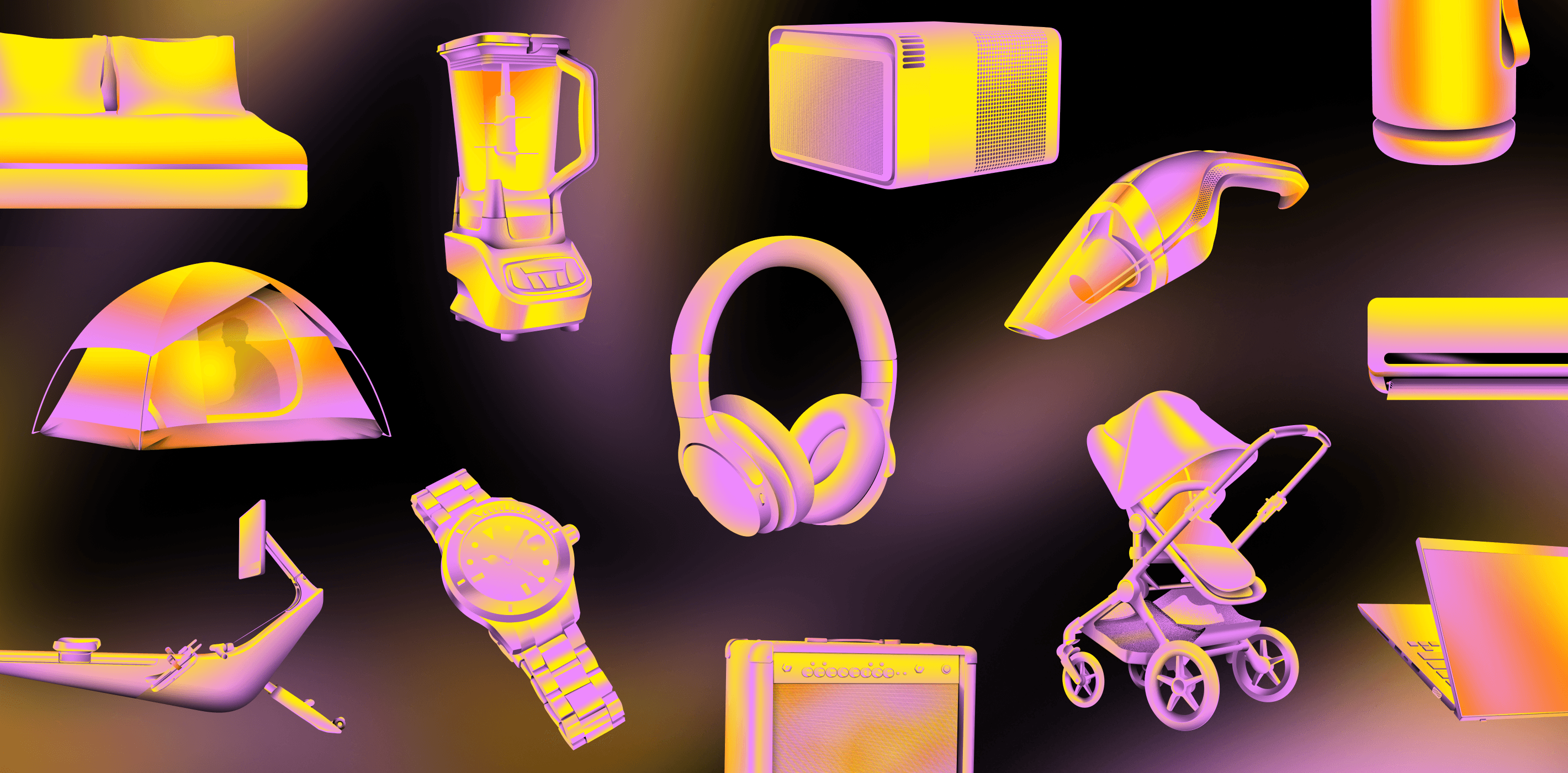The rise of affordable and easily available smart devices has had a huge impact on the way the global economy functions. These days, most people—whether they’re located in the United States, China, Europe, or elsewhere—have easy access to the internet with just a tap of a phone, watch, or computer key, and it’s shifting the way they communicate, work, play, and shop.
For an example of how technological advances have helped to shape the global economy, just think back to the early days and picture what the e-commerce landscape looked like on the web. Rudimentary tools, slow connections, and data limitations made it tough to navigate shopping sites, but as the technology has grown and been refined, so has the experience with online shopping.
Many of us now turn to the internet for most of our shopping needs. Every item—whether it’s fashion apparel, shoes, toys, electronics, media, hobby, and tools for DIY projects—is available on the web. They’re all quick and easy to access thanks to huge e-commerce sites like Amazon, Zappos, Walmart, Crate & Barrel, Wayfair, Overstock, and others.
It’s hardly just American companies that are capitalizing on the rise of e-commerce shopping, however. China has already managed to capture one of the largest segments of the e-commerce market—and is likely to continue to grow its presence significantly in the next five years. The e-commerce landscape is also expected to grow significantly in the coming years, with the total revenue projected to be about $4.2 trillion by 2025. But which industries are poised to capture more of the revenue as the landscape continues to change shape?
Clyde reviewed data from Statista in order to break down the main five e-commerce industry segments—fashion; electronics and media; toys, hobby, and DIY; furniture and appliances; and food and personal care—and discuss how much each will grow in the next five years, the effect of the coronavirus on businesses in those segments, and the forces shaping the future of e-commerce worldwide. The market segments were ranked based on the total projected growth over the next five years—up to 2025.
Did You Know?
Clyde offers a wide range of product warranties that can cater to any industry. That includes industries like Consumer Electronics, Jewelry, Furniture, Sporting Equipment, and much more.
#5 Electronics & Media
- 2020 revenue: $600.5B
- 2025 projected revenue: $773.9B
- Projected growth: 28.88%
It’s no secret customers like to compare reviews, features, and other factors before buying high-cost electronics such as laptops, TVs, and desktop computers, and the desire to get educated on the ins and outs of the products being considered is precisely what has helped to drive the growth in electronics and media e-commerce—especially during the height of the pandemic. By shopping online for these high-priced items, customers were able to avoid the risks of in-person shopping and take the time necessary to compare the products and user reviews while getting access to more product options than are typically found in a big box store.
The listings on e-commerce sites offer detailed product information, insight into performance and functionality, and in many cases user reviews, which allow shoppers to gather more insight into the products than they’d otherwise get. The ability to compare prices is also a huge draw, as shoppers are often able to get the best deals on these costly items by simply browsing different e-commerce sites to find the lowest prices. Plus, most large retailers now offer extremely short delivery times for these large items, which makes it even easier to shop for expensive electronics and media online. In many cases, these items ship quickly and free of charge, making it easy for busy shoppers to snag deals and receive their items just a few days after purchasing them.
#4 Furniture & Appliances
- 2020 revenue: $383.2B
- 2025 projected revenue: $521.9B
- Projected growth: 36.20%
Shopping for furniture and appliances in stores wasn’t just tough to do during the height of the pandemic when stores were closed across the nation, but it can be time-consuming, as each store offers different products and different deals, which typically means you have to visit multiple stores to find the right items. The benefit of e-commerce sites for furniture and appliance purchases is shoppers can get easy access to a wide range of choices with just a click of the mouse. They can also get a high level of personalization thanks to sophisticated e-commerce features that let them tailor their shopping experiences to their preferences. That’s part of why furniture and appliance e-commerce has exploded in growth recently and is projected to continue to grow rapidly in the coming years, too.
Other unique e-commerce features—such as virtual reality, which lets shoppers “try on” that new gas stove in their kitchens or fit the new armchair into their living rooms—have helped consumers quickly adapt to this new way of furniture and appliance shopping. Virtual reality offers a feature that isn’t readily available in brick-and-mortar stores. As with other large purchases, the ability to price compare and find the best deals on everything from microwaves to refrigerators, mattresses, lamps, decor, and even vacuums is another driving factor behind the growth of e-commerce shopping in this industry and is likely to continue to propel the growth in revenue over the long term.
Trending
An exceptional customer experience starts with the first purchase. Check out our guide to a merchant dashboard that drives additional revenue each time you sell a product.
#3 Toys, Hobby, DIY
- 2020 revenue: $636.4B
- 2025 projected revenue: $946.4B
- Projected growth: 48.71%
The internet’s e-commerce sites are a gold mine for finding toys, DIY, or hobby items, and the wide selection of items available online is precisely the main driver of growth in this e-commerce industry. This is especially true for shoppers looking for certain hard-to-find hobby or collectible items, which aren’t typically available in brick-and-mortar stores, but are easily accessible via online marketplaces built for niche products. Other unique e-commerce perks, like trustworthy product reviews and price comparison tools, are also a draw for buyers who want to make informed choices. This is especially true when it comes to DIY products, like tools for gardening or barbecue equipment, which were in high demand at the height of lockdowns during the pandemic.
The wide range of available products also plays a part in driving shoppers to e-commerce sites for toys, hobby, and DIY purchases. For example, buyers looking for sportsmen gear typically want to choose from a wide range of choices to fit their needs, and it’s common for these shoppers to want access to certain brands or products. It’s not easy to find a brick-and-mortar store that carries all the brands in the market, but it’s simple to find the desired products and brands online, given that there are no stockroom or floor space limitations for inventory.
#2 Fashion
- 2020 revenue: $752.5B
- 2025 projected revenue: $1164.7B
- Projected growth: 54.78%
The fashion e-commerce industry actually experienced a downturn during the first part of 2020, likely due, at least in part, to lockdowns and job closures cutting the need for new clothing items. But this e-commerce industry bounced back and then grew by a whopping 14% when compared to pre-coronavirus trends. This segment of e-commerce, which includes apparel items, shoes, bags, and accessories, is popular among shoppers—and U.S. shoppers in particular, who spend the most money on apparel. E-commerce offers a new kind of shopping experience for fashion, including a broader product range, free shipping, same-day delivery, and hassle-free return processes, which are major perks for buyers looking for fashion items online.
Other factors—like a curated shopping experience that takes into account previous purchases and browsing history to offer personalized suggestions—or services where individual outfits are put together by personal style advisers have only added to the online clothes shopping experience. Interestingly social media influencers have also played a significant role in the rise of online fashion retail popularity. Whether a fashion blog or a social media platform, these digital influences are able to reach huge audiences. Product placement has also helped to grow fashion e-commerce at unprecedented speeds.
#1 Food and personal care
- 2020 revenue: $482.1B
- 2025 projected revenue: $791.6B
- Projected growth: 64.20%
The fastest-growing segment of e-commerce is food and personal care, and it’s due in major part to the pandemic, which caused online sales of groceries and personal hygiene items to surge as social distancing rules were implemented across the nation. But the pandemic isn’t the only draw of shopping for food and personal care items online. One of the main factors driving the growth of food and personal care e-commerce is that online shoppers can save time and avoid crowded stores by using online pharmacies, drugstores, or grocery stores that offer home delivery—while getting access to a wide selection of products and brands that may not be available in regional brick-and-mortar shops.
The option to set recurring purchase fulfillment, like monthly or bi-monthly delivery of medications, vitamins, deodorant, or other personal care items, has also helped to drive interest in this industry as customers look for ways to fill their ongoing shopping needs quickly and easily. Competitive prices have also helped drive consumer interest in e-commerce food and personal care purchases, but it’s also important to note the fresh food e-commerce industry is still in its infancy. There is still significant room to grow as the industry refines processes for delivering easily damaged items like fruits, vegetables, dairy, and meats to consumers who shop online for their groceries. The e-commerce food and personal care industry is expected to grow significantly for that reason alone, as e-retailers figure out how to seamlessly fill the needs of online shoppers looking for these types of items.
Photos courtesy Shutterstock users: Ivan Kruk, Sirtravelalot, Ventura, Sevenke, Farknot Architect and McLittle Stock
SIGN UP FOR OUR NEWSLETTER


















